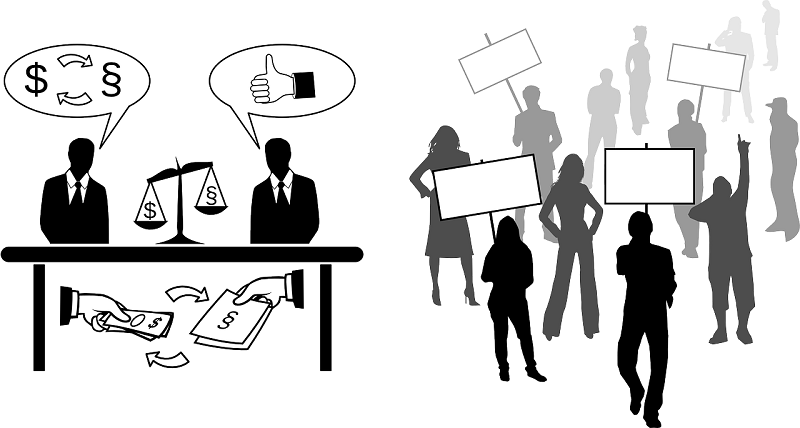This article demonstrates how politics can have an adverse impact on an organization’s operations and people’s behavior. Politics in the workplace has been a widespread phenomenon during the past three decades. Generally speaking, top management has more of it than lower management because of their influence and power. Organizational politics are necessary to control the monopoly within the corporation. Members of an organization can accomplish goals by engaging in “organizational politics,” a practice that allows them to do so without following the correct processes. Other employees may suffer from these self-interests, or they may even benefit the company’s objectives.
 Source: Pixabay
Source: PixabayDue to unemployment, employees may choose to remain with the business despite poor pay and an increasing workload. The Organizational Politics may have changed their behavior at work as a first response (Drory, 1993). Workers may start to miss this truth. The employees won’t put out their full effort. Employees may purposefully postpone carrying out their given formal duties. Furthermore, if they feel their efforts will go unnoticed, they might not be as creative as they should be. Employees are not psychologically present in the organization since they don’t care about the company’s success. Even if they may still be employed by the company, employees do not consider themselves as a part of the system. Sometimes workers may feel like a liability to the business.
Demographics
| VARIABLE | FREQUENCY | PERCENTAGE |
| AGE | ||
| 20-30Years | 103 | 46.4 |
| 31-40 | 83 | 37.4 |
| 41-50 | 23 | 10.4 |
| 51 & Above | 13 | 5.9 |
| GENDER | ||
| Male | 162 | 73.0 |
| Female | 60 | 27.0 |
| EDUCATION | ||
| Secondary | 2 | .9 |
| Higher Secondary |
9 | 4.1 |
| Graduation | 69 | 31.1 |
| Masters | 98 | 44.1 |
| MS/ M Phil/ PhD |
44 | 19.8 |
| MARITALSTATUS | ||
| Married | 1.50 | 67.6 |
| Single | 72 | 32.9 |
| EXPERIENCE | ||
| 1-5 Years | 85 | 38.3 |
| 6-10 | 73 | 32.9 |
| 11-20 Years | 41 | 18.5 |
| More than 20 |
23 | 10.4 |
The graph illustrate demographic such as age, gender, education, marital status and experience of the individual persons for their desire occupations. The employees are more in percentage that is 46.4 between the ages of 31-40. Moreover the male workers are more than the female and the experience should be 1-5 years at least.
Problems within their institution should be identified and addressed by organizational professionals, such as organizational psychologists. As a result, businesses are considerate of the requirements of their employees and seek to improve the working environment. Another suggestion is to plan frequent training sessions for the company’s managers so they can better comprehend the political climate and propose quick remedial measures. Every employee should be able to contribute to how the company is run, and management should share success with lower-level employees. Every employee should feel valued at their job, and management should include new hires in victory celebrations. It can also provide advice on how to include employees in programmes that will increase their sense of loyalty to the company. Studies show that in order to boost customer satisfaction, a company must motivate its human resources to work diligently, effectively, and successfully. Every employee should feel valued at their job, and management should include new hires in victory celebrations. It can also provide advice on how to include employees in programmes that will increase their sense of loyalty to the company. Studies show that in order to boost customer satisfaction, a company must motivate its human resources to work diligently, effectively, and successfully.
The main goal of the study is to ascertain how organizational politics and its component affect employees’ job satisfaction in the healthcare industry. The study significantly added to the body of knowledge already known about the relationship between job satisfaction and one’s perception of organizational politics.
by
HIRA FAROOQUI
